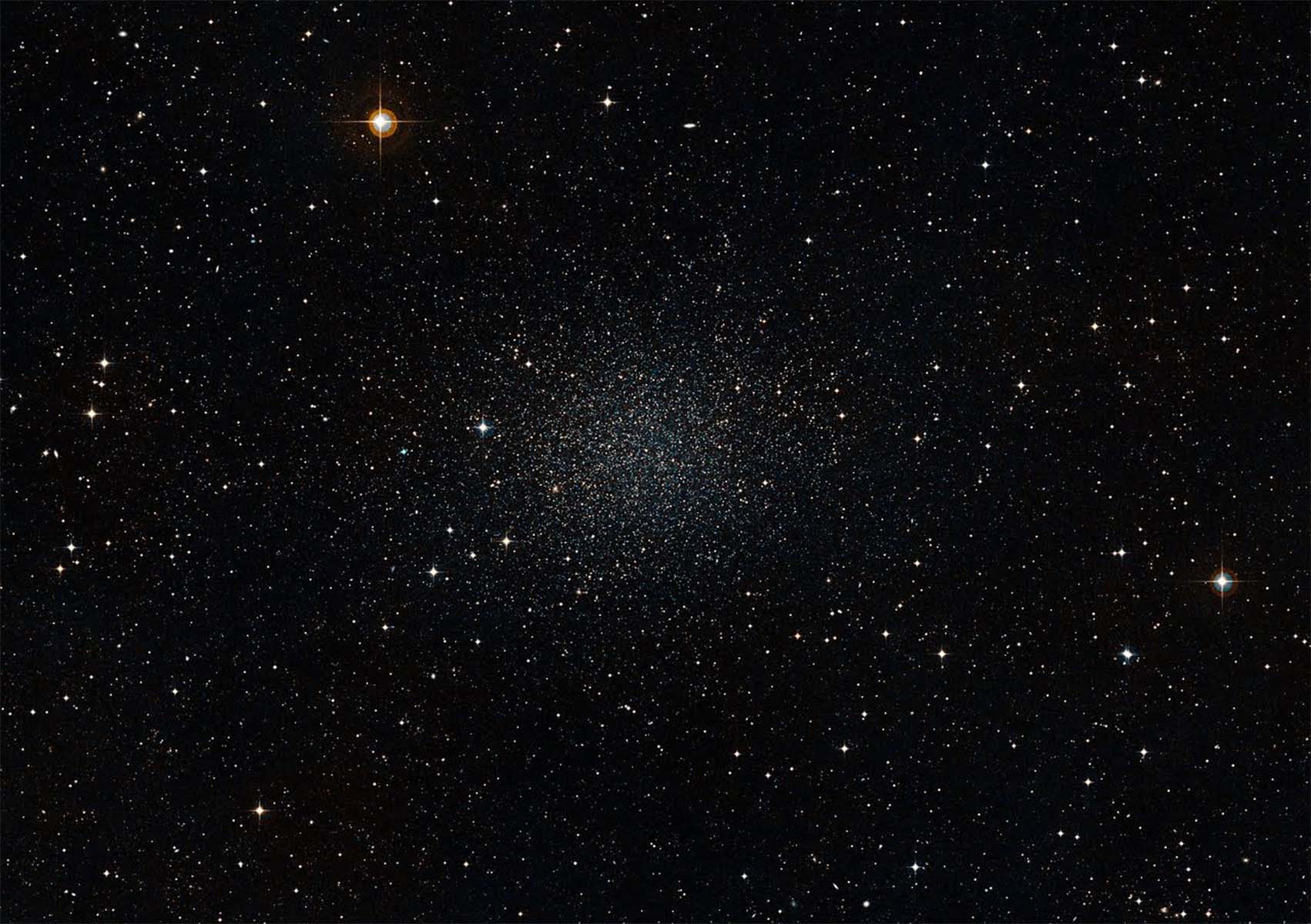First proper motions measured for stars in a small galaxy outside Milky Way
By combining data from the Hubble Space Telescope and the Gaia mission, University of Groningen astronomers have been able to measure the proper motion for fifteen stars in the Sculptor galaxy, the first such measurement for stars in a small galaxy outside the Milky Way. The results show an unexpected preference in the direction of the movement, which suggests that the standard theoretical model s used to describe the motion of stars and dark matter halo’s in other galaxies might be invalid. Th e results were published on 27/11/2017 in Nature Astronomy.

Astronomers have long been able to measure the movement of stars in our ‘line of sight’ (i.e. the movement towards us or away from us) through the redshift, caused by the Doppler effect. However, measuring the movement in the plane of the sky, called the ‘proper motion’ is much more difficult. It requires multiple very precise measurements of a stars position spread out over several years to detect this proper motion. Because of the immense distance, even many stars in our galaxy only move very little across the sky as seen from Earth. For stars outside the galaxy, this movement is even smaller.
The European Gaia mission, which is currently under way, is designed to measure the exact location of more than one billion stars, mostly in our own galaxy. ‘But Gaia also measures star positions in nearby galaxies’, explains University of Groningen astronomer Davide Massari. ‘And for some of these stars, we also have the location as measured by the Hubble Space Telescope, some twelve years ago.’
So Massari and his colleagues from the Kapteyn Astronomical Institute set out to combine both data sets. This is not an easy task, as both missions measure the location in different ways. By using background galaxies which don’t change position in the twelve years, the team was able to combine the data. ‘We had to be very careful to rule out any systematic errors’, says Massari. But they succeeded and out of 120 stars measured by both Hubble and Gaia in the Sculptor galaxy, they found fifteen extremely accurate paired observations.
‘ Next, we determined how the stars move in this small galaxy, which is quantified by the anisotropy parameter. If high, the stars have very elongated trajectories, if very small, they have circular orbits. Knowing this allows us to pin down the properties of the dark matter halo in which the galaxy is embedded. ‘But our measured value was very surprising, and wasn’t allowed by standard models.’ This means that some of the assumptions on which this models is based must be wrong.

Complex
‘ So far, we could only test models by using the line-of-sight movement. That seemed to go well, but now, with proper motion, the standard models break down’, Massari explains. ‘One possible explanation is that the model assumes all stars to be in a single population’. But we know Sculptor is complex and shows at least two stellar components (one more compact and one more extended). There is in fact, a model which includes this and the anisotropy which Massari and colleagues observed is indeed predicted by this model, if most of the stars they measure belong to the most compact component.
The movement of stars depends mostly on the invisible dark matter halo around a galaxy. This is why it is so important to determine the anisotropy parameter because it can be used to pin down the distribution of dark matter in this galaxy, which in turn depends on the nature of dark matter itself.. Massari: ‘Our results show that by using the Gaia data, combined with other data sets, we can measure proper motion of stars outside the Milky Way and thus improve the models which describe how dark matter is distributed in these other galaxies.’
Precise measuring
A second major result is a more precise measurement of the orbit of the Sculptor galaxy around the Milky Way. ‘This orbit is much wider than expected. Previously, it was believed that the current spheroidal shape of Sculptor was in part the result by some close passages, but our measurements show this is not the case.’ Massari and the team from the Kapteyn Institute are looking forward to extending their sample of stars outside the Milky Way with known proper motion after the new Gaia data release, early next year.
---------------------------------------------------------------------------------------------------
More information
Kapteyn Institute, University of Groningen
-
Davide Massari, e-mail: massari rug.astro.nl , phone: 050-3634094
-
Amina Helmi, e-mail: ahelmi rug.astro.nl , phone: 050-3634045/0643041424
Article D. Massari, M. A. Breddels, A. Helmi, L. Posti, A. G. A. Brown en E. Tolstoy: Three-dimensional motions in the Sculptor dwarf galaxy as a glimpse of a new era. Nature Astronomy 27 November 2017. DOI 10.1038/s41550-017-0322-y
More news
-
05 November 2025
Ten years of lifting paving stones
-
04 November 2025
Prostheses with a human-centered approach
